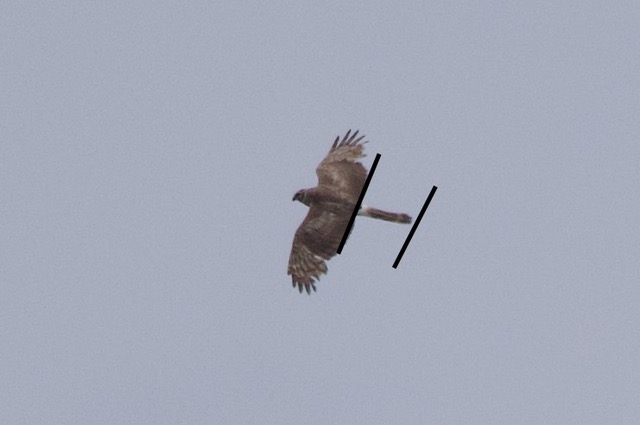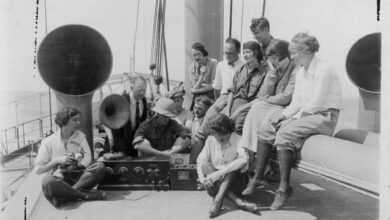First Hen Harrier for Barbados? – Mark Avery

 I posted some photographs of a ringtail harrier a few days ago (click here) without being very forthcoming about their origin. Such birds are difficult to identify as there are quite a few options, and the probabilities of seeing the different species vary depending on where in the world you are. These photographs came from Barbados, where this bird was seen at the north of the island at a private wetland on the morning of 11 June 2025 (eBird list) by Michael St John.
I posted some photographs of a ringtail harrier a few days ago (click here) without being very forthcoming about their origin. Such birds are difficult to identify as there are quite a few options, and the probabilities of seeing the different species vary depending on where in the world you are. These photographs came from Barbados, where this bird was seen at the north of the island at a private wetland on the morning of 11 June 2025 (eBird list) by Michael St John.
No harrier species nests on Barbados and any harrier species there is a vagrant (and therefore an exciting bird to see – although a harrier anywhere any time is an exciting bird to see). It was a distant view, of a difficult bird, and was identified by the Merlin app as Northern Harrier (a North American species which has only recently been split from the Hen Harrier) but eBird verifiers asked for it to be listed as a ‘harrier sp’ (ie a harrier of unknown species).
Which species of harrier might it be? Northern Harrier, the North American species, is immediately a strong possibility as the location of Barbados means that many species which nest in say the USA or Canada reach the island. However, there are, as I understand it, no confirmed Northern Harrier records for Barbados. A previous recent record of Northern Harrier on Barbados was subsequently identified from photographs to be a Pallid Harrier (a European and Asian species which is spreading west across Europe and has nested as close to the UK as the Netherlands and Spain in recent years – click here for links to an article in British Birds, click here for the story of successful nesting of Pallid Harrier in the Netherlands in 2017, click here for nesting of Pallid Harriers in Spain and again in The Netherlands in 2019, click here for first nesting of Pallid Harrier in France in 2020). Pallid Harriers winter in Africa and there is therefore the possibility of a migrating bird getting lost, or blown off course, and pitching up in Barbados. But the two other European harrier species with similar-plumaged females and young males are Hen Harrier and Montagu’s Harrier. Maybe it was one of them? The observer was edging towards Hen Harrier as the most likely species and through an intermediary got in touch with me.
Now, I’m very interested in harriers, particularly Hen Harriers, but I wouldn’t claim to be in the top echelons of identifiers of ringtail harriers from photographs – I’m glad that you cannot listen to the internal monologue in my head as I flick through the pages of birding magazines as I misidentify good photographs of birds I would practically never misidentify in the field. And so I posted the images on this blog and asked around. Paul Irving, former chair of the Northern England Raptor Forum responded first and opted firmly for Hen Harrier in a comment on this blog, Richard Porter (top bloke, top birder and a raptor expert since my schooldays when he co-authored Flight Identification of European Raptors with Ian Willis, Steen Christensen and Bent Pors Nielson in 1974) also was sure of Hen Harrier identification and, to round it off, so is Dick Forsman, a legend of a birder and the author of the current bible on raptor identification
Looking simply at Wikipedia (as I don’t have the checklist of the birds of Barbados) European Marsh Harrier has been recorded on Barbados along with Pallid Harrier and this record of Hen Harrier. Also, there are frequent records of Osprey on Barbados but the same observer that saw the Hen Harrier read a ring from a Scottish-ringed Osprey on Barbados in 2023 (click here). Clearly, raptors from Europe/Africa are occasionally crossing the Atlantic. The list of birds seen in Barbados has quite a lot of bird species which are vagrants from Europe and if you check the eBird list of the visit on which this Hen Harrier was seen you’ll notice that the observer also saw a Sharp-tailed Sandpiper which is an Asian species which winters in Australia. That was quite a day’s birding.
More generally, given the regular occurrence of Forster’s Tern as a vagrant to the UK, and occasional American Black Terns, I wonder how often Common Terns and even Roseate Terns cross the Atlantic to us from North America. I bet they do, and we haven’t noticed (unless there are records which I haven’t noticed). Maybe even Starlings, introduced to North America from releases in Central Park, New York, in 1890(?) are occasionally blown back to their continent of origin – would we know?
Adult male harriers are much easier to identify, and when North American birders see adult male Hen Harriers they are impressed by them (‘Spanky bird! click here) but some unreliable types who may not be so keen on harriers can even misidentify the adult males click here.
[registration_form]




